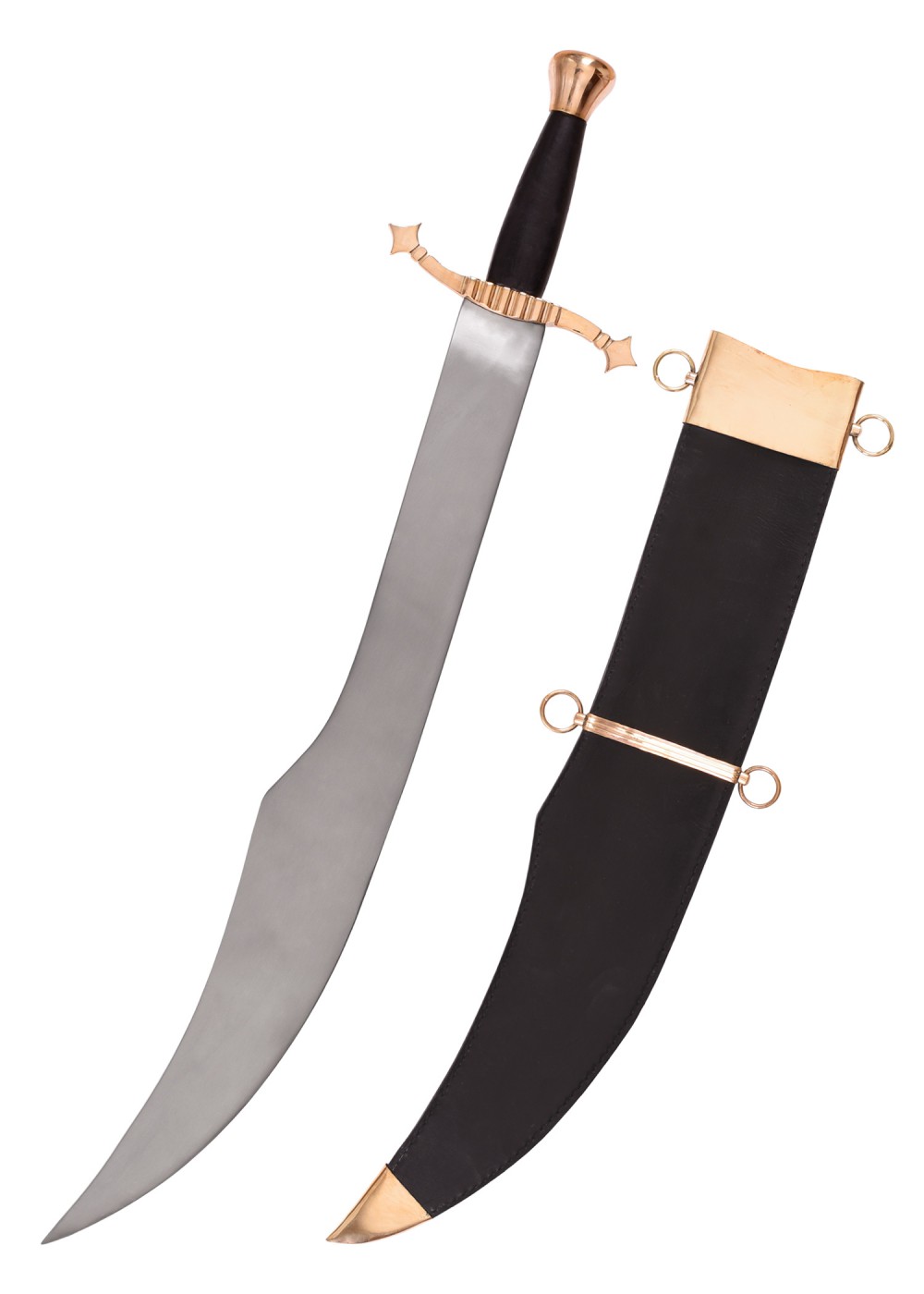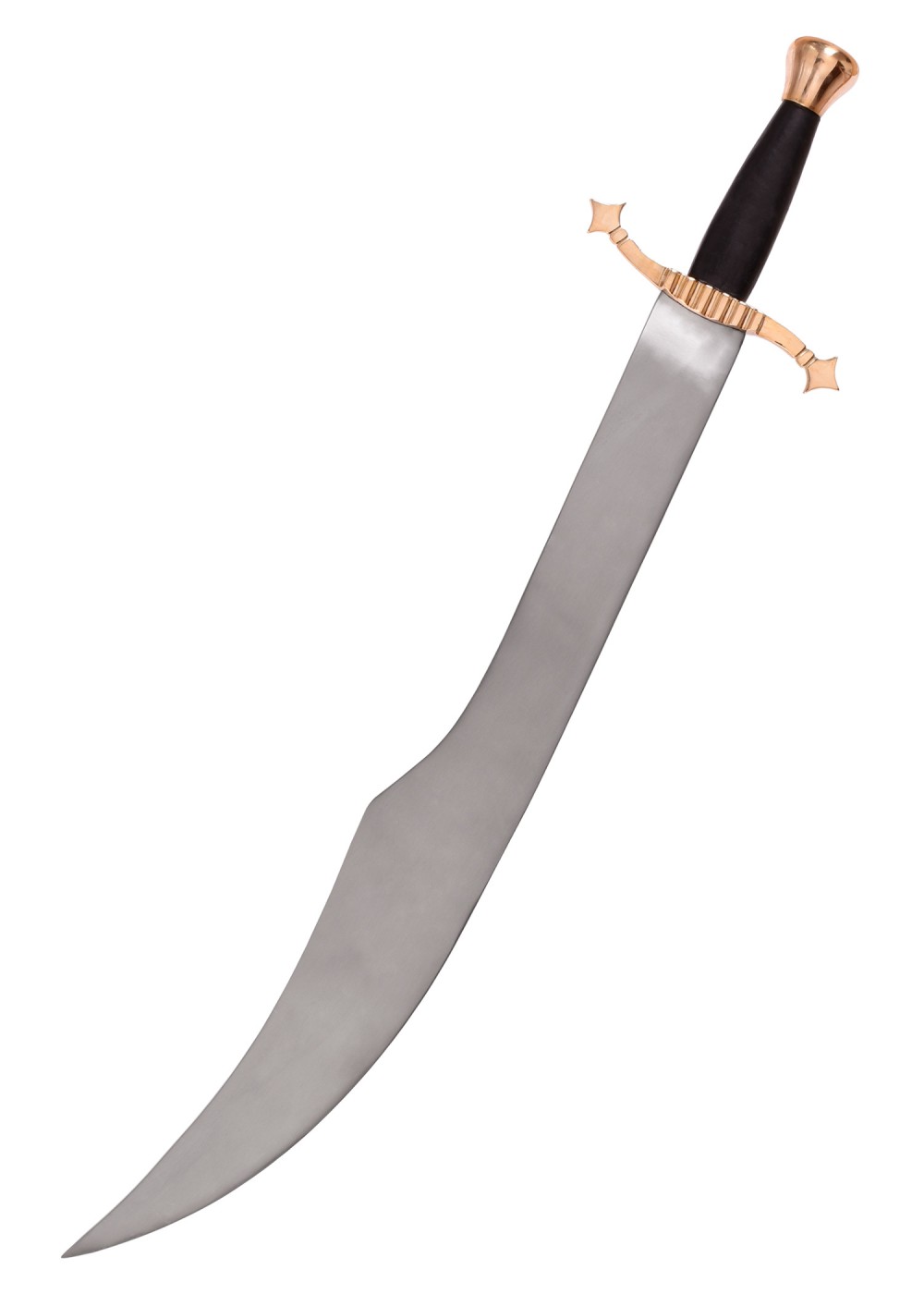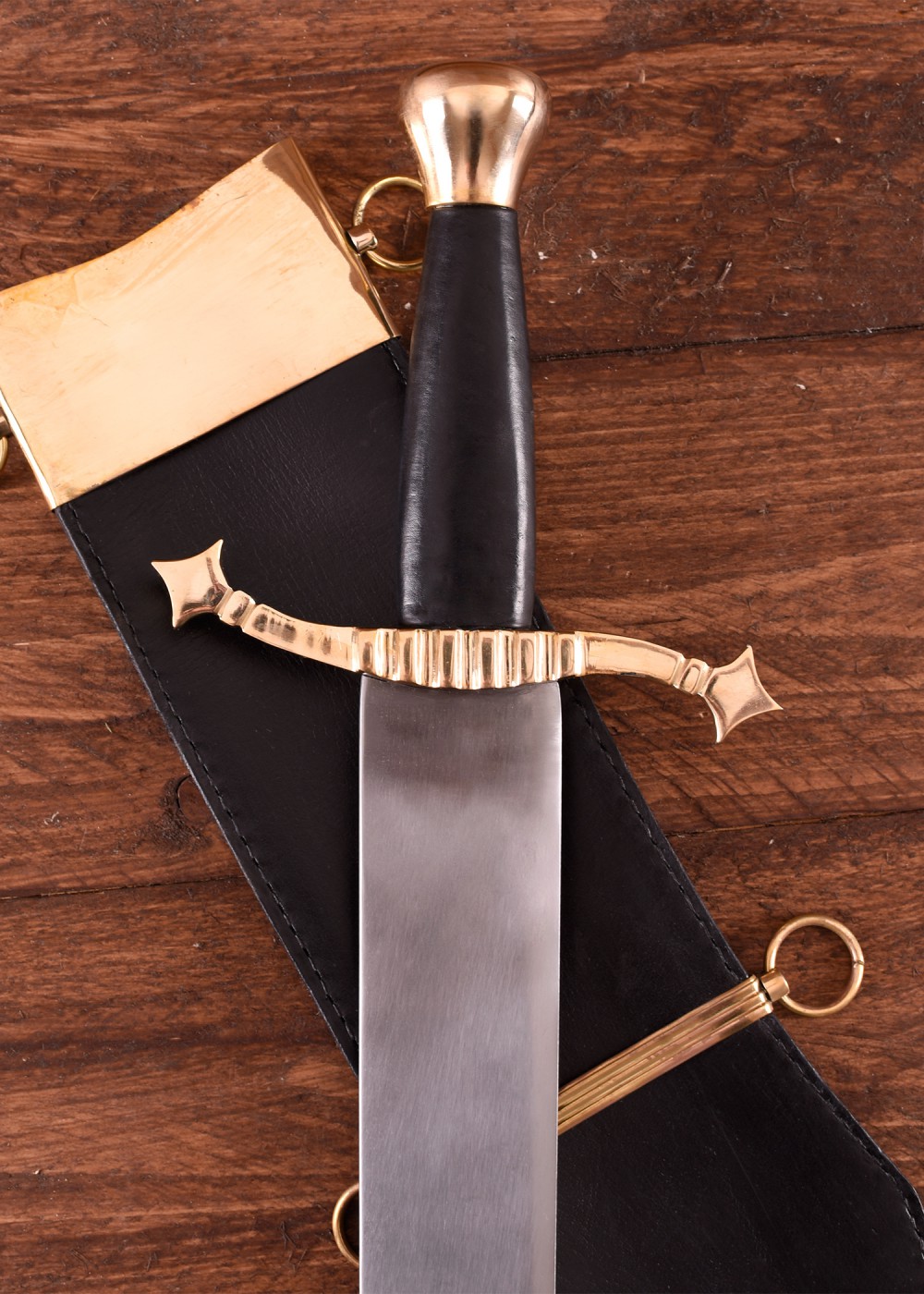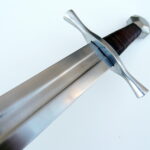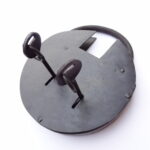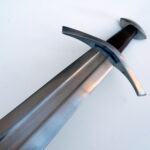Beskrivning
A falchion (Old French: fauchon; Latin: falx, ”sickle”) is a one-handed, single-edged sword
of European origin, whose design is reminiscent of the Persian shamshir, the Chinese dadao, and modern machete.[citation needed] Falchions are found in different forms from around the 13th century up to and including the 16th century. In some versions the falchion looks rather like the weapon-seax and later the sabre,
and in some versions the form is irregular or like a machete with a crossguard.
The blade designs of falchions varied widely across the continent and through the ages.
They almost always included a single edge with a slight curve on the blade towards the
point on the end and most were also affixed with a quilloned crossguard for the hilt in
the manner of the contemporary arming swords. Unlike the double-edged swords of Europe,
few actual swords of this type have survived to the present day; fewer than a dozen
specimens are currently known. Two basic types can be identified:
Cleaver falchions
One of the few surviving falchions (the Conyers falchion) is shaped very much like
a large meat cleaver, or large bladed machete. This type is also illustrated in art
(e.g. the Westminster Hall mural, shown to the right) The type seems to be confined to
the 13th and 14th centuries.
Cusped falchions
The majority of the depictions in art reflect a design similar to that of the großes
Messer. A surviving example from England’s 13th century (The Thorpe Falchion) was just
under 2 pounds (0.91 kg) in weight. Of its 37.5 inches (95.25 centimetres) length, 31.5
inches (80.01 cm) are the straight blade which bears a cusped or flare-clipped tip similar
to the much later kilij of Turkey. This blade style may have been influenced by
the Turko-Mongol sabres that had reached the borders of Europe by the 13th century.
This type of sword continues in use into the 16th century.
In addition, there are a group of 13th- and early 14th-century weapons sometimes
identified with the falchion. These have a falchion-like blade mounted on a wooden
haft 1–2 ft (30–61 cm) long, sometimes ending in a curve like an umbrella.
These are seen in numerous illustrations in the mid-13th-century Maciejowski Bible.
A number of weapons superficially similar to the falchion existed in Western Europe,
including the Messer, hanger and the backsword.
Status
It is sometimes presumed that these swords had a lower quality and status than the
longer, more expensive swords. It is possible that some falchions were used as axe-like
tools between wars and fights, since they were practical pieces of equipment.
While falchions are commonly thought to be peasants’ weapons this is not always
the case; the Conyers falchion belonged to a landed family, and the falchion is
shown in illustrations of combat between mounted knights. Some later falchions
were ornate and used by the nobility; there is an elaborately engraved and gold
plated falchion from the 1560s in the Wallace Collection, engraved with the personal
coat of arms of Cosimo I de’ Medici, Grand Duke of Tuscany.
– Bladmaterial : EN45 fjäderstål
– Total längd : ca 75 cm
– Bladlängd : ca 63 cm
– Handtag längd : ca 15 cm
– Vikt : ca 1280 g

